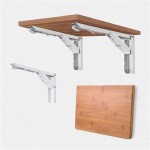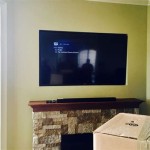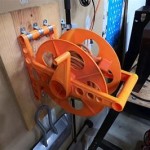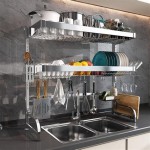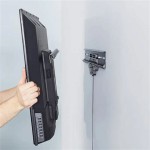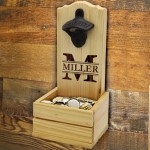LED Outside Wall Mounted Lights: Illumination and Security for Your Property
LED outside wall mounted lights are a versatile and energy-efficient lighting solution for a variety of outdoor applications. They provide illumination for pathways, doorways, patios, and landscaping features, enhancing both the aesthetics and security of residential and commercial properties. The durability, longevity, and diverse design options of LED technology make them a preferred choice compared to traditional lighting methods.
These lights are designed to be mounted directly onto exterior walls, providing a fixed and reliable light source. Their placement allows for targeted illumination, increasing visibility and reducing potential hazards around the property. The focus of this article is on the key attributes, benefits, selection considerations, and installation aspects of LED outside wall mounted lights.
Benefits of LED Technology in Outdoor Wall Lights
The adoption of LED technology in outdoor wall lighting offers a multitude of advantages over traditional incandescent or halogen options. These benefits contribute to cost savings, improved performance, and enhanced environmental responsibility.
Firstly, energy efficiency is a significant advantage. LED lights consume considerably less energy than traditional bulbs, often using up to 75% less electricity to produce the same level of brightness. This translates into lower energy bills and a reduced carbon footprint. The reduced energy consumption makes them a sustainable choice for outdoor lighting, aligning with environmental conservation efforts.
Secondly, LEDs have a significantly longer lifespan compared to incandescent or halogen bulbs. An LED bulb can last for tens of thousands of hours, minimizing the need for frequent replacements. This extended lifespan reduces maintenance costs and labor associated with replacing bulbs, particularly in hard-to-reach locations. The extended lifespan contributes to long-term cost savings and reduced waste.
Thirdly, LED lights offer superior durability. They are resistant to shock, vibration, and temperature fluctuations, making them well-suited for outdoor environments. Unlike traditional bulbs, LEDs do not have filaments that can break easily, enhancing their robustness and reliability in harsh weather conditions.
Fourthly, instant illumination is another advantage. LED lights reach full brightness instantaneously, unlike some traditional bulbs that require a warm-up period. This immediate illumination is crucial for safety and security purposes, providing instant visibility when needed. The quick response time contributes to improved responsiveness in security applications.
Fifthly, LEDs provide design flexibility. They are available in a wide range of colors, styles, and shapes, allowing for customization and aesthetic integration with the property's architecture. This versatility enables homeowners and businesses to choose lights that complement their design preferences and create desired lighting effects.
Finally, LED lights produce minimal heat. They convert a higher percentage of energy into light, resulting in less heat generation compared to traditional bulbs. This reduces the risk of burns and minimizes the potential for damage to surrounding materials, contributing to safer operation and installation.
Key Considerations When Selecting LED Outside Wall Mounted Lights
Choosing the right LED outside wall mounted lights requires careful consideration of several factors to ensure optimal performance, longevity, and aesthetic appeal. These selection criteria encompass brightness, color temperature, weather resistance, style, and control features.
Lumen output is a primary consideration. Lumens measure the amount of light emitted by a bulb. The required lumen output depends on the intended use and the area to be illuminated. For pathways and walkways, a lower lumen output may be sufficient, while larger areas or security applications may necessitate higher lumen ratings. Consider the size of the area and the level of brightness desired when selecting the appropriate lumen output.
Color temperature, measured in Kelvin (K), influences the ambiance and appearance of the light. Lower color temperatures (e.g., 2700K-3000K) produce a warm, inviting light, suitable for residential settings and creating a cozy atmosphere. Higher color temperatures (e.g., 4000K-5000K) produce a cooler, brighter light, often preferred for security applications and commercial spaces. Choose the color temperature that best suits the intended use and desired aesthetic.
Weather resistance is crucial for outdoor lighting. Look for lights with an appropriate Ingress Protection (IP) rating. IP ratings indicate the level of protection against dust and water. A rating of IP65 or higher is recommended for outdoor wall mounted lights, ensuring protection against rain, snow, and dust ingress. The IP rating ensures the lights can withstand the elements and maintain their performance over time.
Style and design should complement the architectural style of the building. LED outside wall mounted lights are available in a wide range of styles, from traditional to contemporary. Consider the overall aesthetic of the property and choose lights that enhance its visual appeal. Options include sconces, lanterns, spotlights, and directional lights. The chosen style should blend seamlessly with the existing architecture and landscaping.
Control features, such as dimming and motion sensing, can enhance the functionality and energy efficiency of the lights. Dimmable lights allow for adjusting the brightness level to create different moods and conserve energy. Motion sensors activate the lights only when movement is detected, providing added security and energy savings. Consider these features based on individual needs and preferences.
Material and construction quality are essential for longevity. Choose lights made from durable materials such as aluminum, stainless steel, or high-quality plastics. These materials are resistant to corrosion and weather damage, ensuring the lights can withstand exposure to the elements. The construction should be robust and well-sealed to prevent water ingress and ensure long-term reliability.
Warranty and certifications provide assurance of quality and performance. Look for lights with a reputable warranty and certifications such as UL or ETL. These certifications indicate that the lights have been tested and meet safety standards. A solid warranty protects against defects and provides peace of mind regarding the longevity of the product.
Installation and Maintenance of LED Outside Wall Mounted Lights
Proper installation and regular maintenance are essential for ensuring the safe and reliable operation of LED outside wall mounted lights. Incorrect installation can lead to safety hazards, while neglecting maintenance can reduce the lifespan and performance of the lights.
Safety is paramount during installation. Disconnect the power supply before commencing any electrical work. Verify the correct voltage and wiring configuration. If unsure about any aspect of the installation, consult a qualified electrician. Electrical safety is crucial to prevent accidents and ensure proper functioning of the lighting system.
Mounting the lights securely is essential. Use appropriate mounting hardware and ensure the lights are firmly attached to the wall surface. Consider the weight of the lights and the type of wall material when selecting mounting hardware. A secure mount prevents the lights from falling and causing damage or injury.
Weatherproofing is critical for outdoor installations. Ensure all connections are properly sealed to prevent water ingress. Use weatherproof connectors and junction boxes to protect electrical components from the elements. Proper weatherproofing prevents corrosion and ensures the long-term reliability of the lighting system.
Regular cleaning helps maintain optimal performance. Periodically clean the lights with a soft cloth to remove dust, dirt, and debris. Avoid using harsh chemicals or abrasive cleaners that can damage the finish or the lens. Clean lights provide better illumination and maintain their aesthetic appearance.
Inspecting the wiring and connections is important for identifying potential problems early. Check for loose wires, corroded connections, or damaged insulation. Address any issues promptly to prevent electrical hazards and ensure continued operation of the lights. Regular inspections contribute to the safety and reliability of the lighting system.
Replacing faulty components when necessary is essential. If a bulb fails or a component malfunctions, replace it promptly with a compatible replacement. Using incompatible parts can damage the lights or create safety hazards. Replacing faulty components ensures the continued functionality and safety of the lighting system.
Proper disposal of old bulbs and components is environmentally responsible. Dispose of old bulbs and components according to local regulations. Many recycling centers accept LED bulbs and electronic components. Responsible disposal minimizes environmental impact and promotes sustainability.

Outdoor Ac100 265v Led Garden Waterproof Ip65 Wall Mounted Light Vintage Building For House In Lamps

Outdoor Wall Light Led Mounted Waterproof Garden Balcony Gate Lights Black Lamp Courtyard Patio Villa Hotel Lazada

Lepe Exterior Wall Mounted Light Outdoor Lighting The Look

Modern Indoor Outdoor Led Wall Lamp Home Decorative Mounted Up And Down Bedside Lights

Square Led Outdoor Wall Lamp Trend 2 Black

Ld55031 6w Round Led Wall Light Outdoor Ip54 Lighting Factory
Ip65 Waterproof 6w Indoor Outdoor Led Wall Lamp Modern Aluminum Adjustable Surface Mounted Cube Garden Porch Light

Outdoor Wall Mounted Li Led Lighting Ip65 Down And Up Iled Bh 045 A

Edit Palermo Led Outdoor Wall Light Dark Grey Lighting

Hdc 4 Led Outdoor Black Gold Wall Lamp Up And Down Light Waterproof Warm White At 1099 00 Delhi New Id 2853861804362

